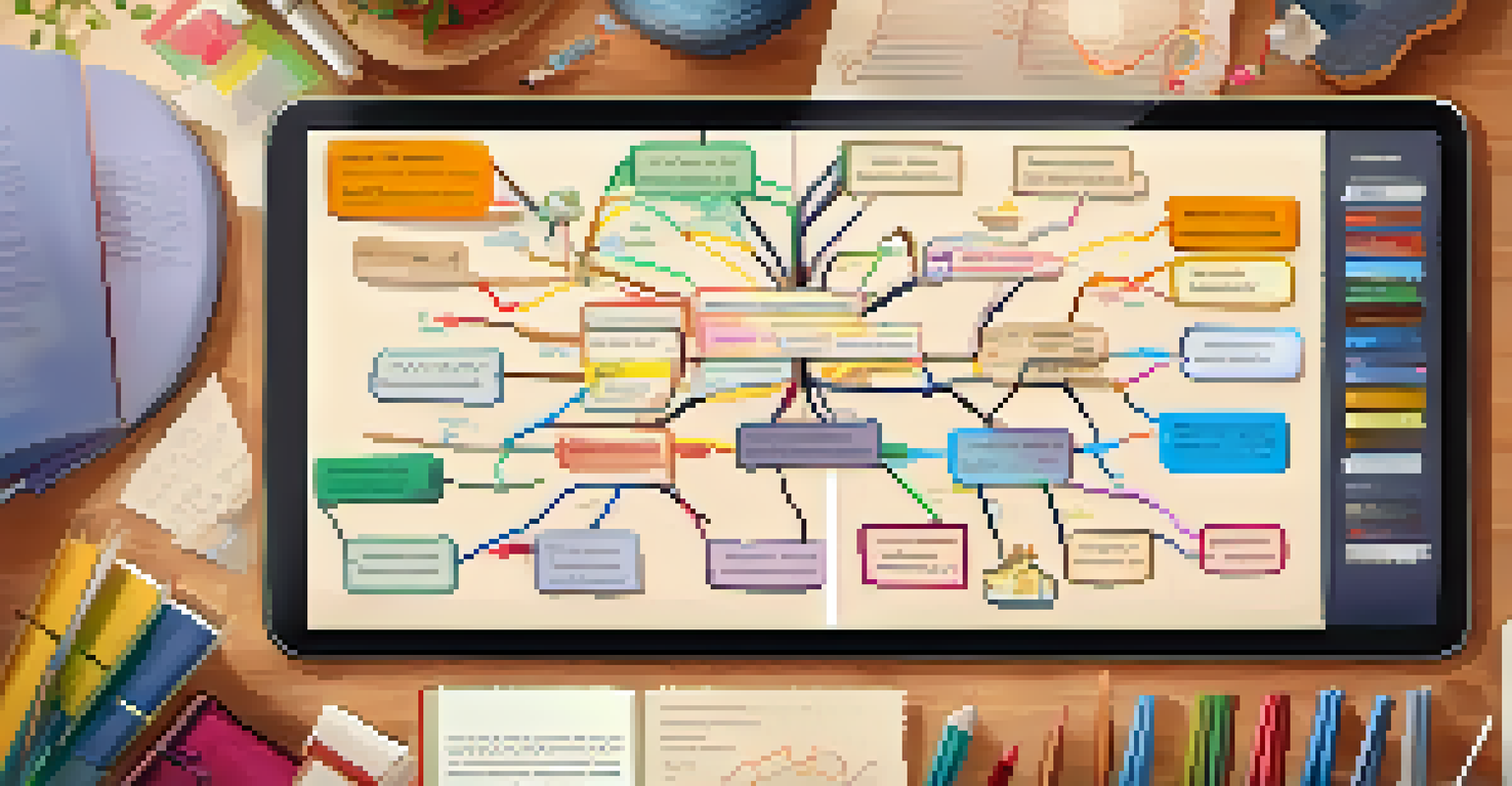Idea Generation Techniques to Boost Innovation in Companies

Understanding the Importance of Idea Generation
Idea generation is the lifeblood of innovation in any company. It’s about creating a pipeline of new concepts that can lead to products, services, or improvements that resonate with customers. Without fresh ideas, businesses risk stagnation and losing their competitive edge.
Innovation distinguishes between a leader and a follower.
In today’s fast-paced market, companies must continually adapt and evolve. This is where effective idea generation techniques come into play, allowing teams to collaborate and think outside the box. By fostering a culture that encourages creativity, organizations can unlock the potential of their employees.
Ultimately, embracing idea generation can transform a company’s approach to problem-solving and innovation. It’s not just about having ideas, but about creating an environment where those ideas can thrive and lead to tangible outcomes.
Brainstorming: A Classic Yet Effective Technique
Brainstorming is one of the most recognized techniques for generating ideas. It involves gathering a group of people to discuss and bounce around ideas without judgment, encouraging free thinking and creativity. This informal setting can lead to unexpected connections and innovative solutions.

To make brainstorming sessions more productive, it’s helpful to establish clear goals and guidelines. Limiting the discussion to a specific problem can help participants focus their thoughts and generate more relevant ideas. Additionally, setting a time limit can create a sense of urgency that often sparks creativity.
Idea Generation Drives Innovation
Generating new ideas is essential for companies to maintain their competitive edge and foster growth.
While brainstorming can sometimes lead to chaotic discussions, the key is to capture every idea generated. Later, these ideas can be refined and evaluated, filtering out the best ones for further development and implementation.
Mind Mapping to Visualize Ideas
Mind mapping is a visual thinking tool that helps organize and connect ideas. By placing a central concept in the middle and branching out with related thoughts, teams can see how ideas relate to one another. This technique can be especially useful for tackling complex topics where multiple factors are involved.
The best way to predict the future is to create it.
Using colorful visuals and symbols in mind maps can make the process more engaging and enjoyable. It allows participants to express their thoughts in a non-linear way, which often leads to unexpected insights and connections. Plus, it’s a great way to involve visual thinkers who might struggle with traditional note-taking.
After completing a mind map, teams can identify key themes and prioritize their ideas based on relevance and feasibility. This structured approach not only boosts creativity but also ensures that innovative ideas are clearly defined and actionable.
The Power of SCAMPER for Idea Refinement
SCAMPER is an acronym for Substitute, Combine, Adapt, Modify, Put to another use, Eliminate, and Reverse. It’s a powerful technique that encourages teams to think critically about existing products or processes and explore ways to enhance them. By asking specific questions related to each element of SCAMPER, teams can stimulate fresh ideas.
For example, if a company wants to improve a product, they might ask how they can modify its features or combine it with another product. This technique encourages lateral thinking and can lead to innovative solutions that may not have been considered otherwise.
Diverse Techniques Enhance Creativity
Utilizing various techniques like brainstorming and mind mapping can significantly boost team creativity and collaboration.
Implementing SCAMPER can be a fun and dynamic exercise, as it turns the focus from generating new ideas to refining and reimagining existing ones. This can lead to innovative adaptations that resonate well with customers while maximizing existing resources.
Crowdsourcing Ideas from Employees
Crowdsourcing harnesses the collective intelligence of employees to generate ideas. By creating platforms where team members can share their thoughts and suggestions, companies can tap into a wealth of diverse perspectives. This inclusivity not only boosts morale but often leads to innovative breakthroughs.
To effectively implement crowdsourcing, organizations can use digital tools like suggestion boxes or idea management software. These platforms can allow employees to submit, discuss, and vote on ideas, fostering a sense of ownership and engagement in the innovation process.
Moreover, recognizing and rewarding contributions can further motivate employees to participate actively. When people see their ideas valued and potentially implemented, it creates a cycle of continuous innovation within the company.
Role-Playing for Empathy and Insight
Role-playing is an engaging technique that helps teams step into the shoes of their customers or end-users. By simulating different scenarios, employees can gain valuable insights into user needs and pain points. This empathetic approach often leads to innovative ideas that are directly aligned with customer experiences.
During role-playing sessions, participants can explore various perspectives, challenging their assumptions and uncovering blind spots in their understanding. This can be particularly effective in identifying areas for improvement in products or services.
Empathy Fuels Customer-Centric Solutions
Techniques such as role-playing and design thinking help teams understand customer needs, leading to more effective and relevant innovations.
Ultimately, role-playing not only fosters creativity but also creates a customer-centric mindset within the organization. When teams understand their audience better, they can develop ideas that resonate more deeply and drive successful outcomes.
Design Thinking: A Human-Centric Approach
Design thinking is a problem-solving approach that emphasizes human needs and experiences. It involves understanding the user, defining the problem, ideating solutions, prototyping, and testing. This iterative process encourages teams to continually refine their ideas based on real feedback, ensuring innovation is grounded in reality.
By focusing on empathy, design thinking helps teams identify and address the underlying issues that customers face. This deep understanding can lead to ideas that not only solve problems but also create meaningful experiences for users.

Implementing design thinking within an organization can cultivate a culture of experimentation and creativity. Teams learn to embrace failure as part of the process, which ultimately leads to more innovative and effective solutions.
Conclusion: Fostering a Culture of Innovation
In conclusion, fostering a culture of innovation within a company requires a commitment to idea generation techniques. By incorporating methods like brainstorming, mind mapping, and crowdsourcing, organizations can create an environment that stimulates creativity and collaboration. These techniques can unlock the potential of employees and lead to transformative ideas.
Ultimately, it’s about creating an atmosphere where every voice is heard, and every idea is valued. Encouraging diverse perspectives and fostering empathy through techniques like role-playing and design thinking can further enhance the innovation process.
As companies embrace these strategies, they not only boost their innovation capabilities but also position themselves for long-term success in an ever-changing market.